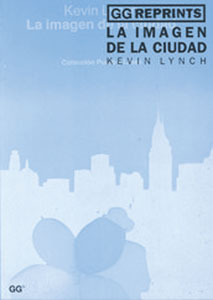 |
Kevin A. Lynch. La imagen de la ciudad. Spanish edition. First published in 1960. Barcelona: Editorial Gustavo Gili, 2014.
In The Image of the City, Lynch analyzes three American cities (Boston, Jersey City and Los Angeles), trying to understand the ways in which a city imprints itself in the experience of its inhabitants and what the mechanisms are through which a city dweller generates an image of his or her environment. According to Lynch, nothing is experimented with by itself, but always in its relationship to its surroundings, to the sequence of events that lead to it, and to the memories of previous experiences. That is the way we establish links with parts of the city, whose images become suffused with memories and meaning, hints and reveries. This book has always made me think about my own relationship with the city and about the way in which the physical surroundings define the psychological and emotional experience of living in urban areas. This book was a great influence on my training as an architect and formed the basis for exhibitions like the project of commissions for the public space Habitat, which I did in Nicaragua in 2011.
|